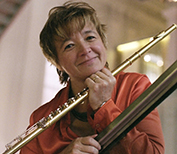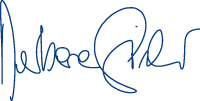Listening well
...is the foundation of all learning in the big field of music. Already when listening to the radio as a child, we instinctively capture the different styles without even knowing which is which. Traditional music, wind music, popular music, jazz, classical music... Or for the experts in classical music: why does Mozart sound different than Beethoven? All these differences come from different languages or even from different dialects among Mozart and Beethoven... these languages are capable of speaking without using words and directly hit the human soul – they are international and understandable for everyone! When we just play without really listening to us, then we stop speaking and will never really reach our audience.
So what to do?
First, there is the written part – the composer's will – expressed in musical notation. Improvisation represents an exception. When improvising, this first step ceases because it is not read. The aural picture that has to be realized, originates directly in our head and is constantly „refilled“ in a creative procedure.
The written musical text
…expresses as well as possible, what exactly should be played. Nevertheless, the written text can never express the entire atmosphere and the stylistic allocation of a musical piece.That's why worlds of expression, which should be realised, are evoked in our ears or our memory. Those are based on texts and auditory experiences from playing ourselves, listening to the radio/a CD/a concert etc. The text is first of all addressed to our eyes – based on what's been read, our musical imaginative power creates an aural picture which should then be realized. That really is a complex and difficult task, always depending on how familiar we are with what we've read before and its stylistic allocation. This process should not be skipped or else the result will be what's been mentioned in the beginning.
The secret
So what's actually the secret of „listening well to yourself“? If we want to listen well to ourselves, we have to start by listening inwardly to what we are going to play. Down to the last detail! Speed, rhythm, course of the melody, dynamics, timbre, vibrato, personal expression, stylistic confidence...etc. But even this kind of listening has to be learnt and practiced. For flutist, there is a legendary exercise book by one of the modern gods of flute playing: Marcel Moyse. „De la sonorite“ - „About the sound“ Now we learn how to really listen, in case we use it correctly. In the beginning, there are only two notes to combine:
For how long do I hold the notes (decision for a certain pulse). Do I play with a vibrato or without?
So now I start with this sound connection. Often the next one is immediately played a semitone lower – but no, stop!
Now it is about repeating this sound connection a couple of times and to stay focussed with your ears. You have to evaluate the following:
Does my notes have background noise?
Am I satisfied with the timbre?
When I play the chosen dynamics – can they be heard?
Have I played the vibrato? - Does this vibrato go well with the chosen dynamics? Is the vibrato free or might it be blocked? Or did I actually follow my objective to play without the vibrato?
Of course, at the same time, there is also a supervision of our playing technique:
Is the lip flexible enough?
Is the breath-support well-adjusted?
Because when we don't hear what we actually want to hear from ourselves, the reasons are mostly to find in technical details. If this happens, our search has to be continued right there in a permanent interplay:
WHAT DO I HEAR – WHAT DO I FEEL
It is all about combining the „playing feel“ with our expectations of what to hear – until both meet. When in school, we also have our teachers as assistance when it comes to interpreting or perform something. They make us aware of things that are not coherent with the text or style. Later on, in a phase without regular classes, it is very helpful to record yourself once in a while – nowadays, in an era of smartphones, this is super easy and can be done in high quality.
Often we come to the conclusion that we actually don't play what we originally wanted to. Now it is about staying focussed without cheating on ourselves: In small steps and by the help of regular recording, we can reach our goal of achieving the inner aural picture. Maybe all of this sounds like very hard work – but you simply have to engage in it. As soon as you do this, you will experience beautiful moments and sometimes even practice in a real „flow“ .
www.flowskills.com/lernprozess.html
Best regards,
Univ.-Prof Barbara Gisler Haase University professor for flute at the University of Music and Performing Arts in Vienna, where she also manages the Institute for Brass and Drum Instruments. She's the author of the flute advisors „magic flute“ and „fit for the flute“ , co-inventor of the „Waveline“ or rather „Loop“ flute, which caused an international stir. International concerts and jury positions, a variety of CD's




